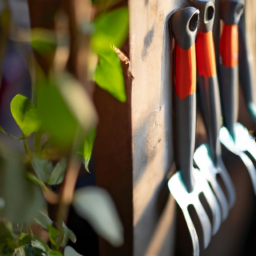Gardening for Environment How It Helps
How Gardening Helps The Environment
How Gardening Helps the Environment
Gardening is not only a great way to beautify your home, but it can also help to save the environment. The main way gardeners help the environment is through reducing and reusing. By taking existing products and reusing them, gardeners are able to reduce the amount of waste going to landfills and reducing the amount of resources needed. By growing plants, gardeners help to increase the number of beneficial plants in their local environment and help to contribute to the preservation of life. In this article, we'll explore some of the features, benefits, pros and cons of gardening for the environment. We'll also look at some of the common mistakes people make when gardening and some best practices for success.
Features of Gardening for the Environment
Gardening for the environment is a great way to practice sustainable practices and reduce your environmental impact. Here are some of the features of gardening for the environment:
- Reducing waste by reusing existing products and materials
- Planting beneficial plants to contribute to the environment
- Conserving resources
- Reducing your carbon footprint
Gardening for the environment can also help to reduce air and water pollution. By planting beneficial plants, gardeners are creating small areas of biodiversity, which can help to filter the air and water in their local environment.
Benefits of Gardening for The Environment
Gardening can bring many benefits to the environment. Here are some of the benefits of gardening for the environment:
- Improving local ecosystems
- Increasing local biodiversity
- Reducing air and water pollution
- Reducing dependence on resources
- Reducing your footprint
Pros and Cons of Gardening for the Environment
Gardening for the environment has its advantages and disadvantages. Here are some of the pros and cons of gardening for the environment:
Pros
- Improving local ecosystems
- Increasing local biodiversity
- Reducing air and water pollution
- Reducing dependence on resources
- Reducing your footprint
Cons
- It can take a lot of time and money to maintain a garden
- The right plants need to be chosen for the environment
- It can be difficult to find the right tools and materials for gardening
- Weeds and pests can be difficult to manage
Case Studies
City of San Francisco
In San Francisco, residents have set up a number of community gardens and educational programs to help increase the city's urban forest. San Francisco's plan includes creating educational gardens, tree planting, rainwater harvesting, composting, and community building. The idea is to promote sustainability and reduce the city's carbon footprint.
Oregon State University
Oregon State University has implemented a number of sustainable practices to reduce its environmental impact. These include the use of green building materials, renewable energy sources, and the promotion of sustainable gardening practices. In addition, the university also offers educational programs and workshops to help residents learn how to garden for the environment.
Park Slope Greenway
The Park Slope Greenway is a project in New York City that has helped to reduce air pollution. The project involved the installation of green infrastructure, which included rain gardens, green roofs, and permeable pavement. This project has also helped to promote gardening and green spaces, which helps to reduce the city's environmental impact.
FAQs
What are the benefits of gardening for the environment?
Gardening for the environment can help to increase biodiversity, reduce air and water pollution, conserve resources, and reduce your carbon footprint.
What materials and tools are needed for gardening for the environment?
The tools and materials needed for gardening for the environment depend on the type of garden you want to create. Generally, you will need soil, compost, plants, seedlings, and tools like garden hoses, trowels, pruners, and garden scissors.
What are the common mistakes people make when gardening for the environment?
Some common mistakes people make when gardening for the environment include not choosing the right plants for the environment, not using the right tools and materials, and not taking into account the effect of pests and weeds.
Best Practices
Here are some of the best practices for gardening for the environment:
- Choose plants that are beneficial for the local environment
- Plan for pests and weeds by using the right tools and materials
- Use mulch and compost to feed plants and reduce weeds
- Collect and conserve rainwater for use in the garden
- Reduce and reuse materials whenever possible
Conclusion
Gardening for the environment is a great way to reduce your impact on the environment and create a more sustainable and beautiful environment. By reducing and reusing materials, planting beneficial plants, and taking into account the effects of pests and weeds, gardeners can help to preserve and improve their local environment. By understanding the features, benefits, pros and cons, case studies, FAQs, and best practices of gardening for the environment, you can create a beautiful and sustainable garden.

Previous Page
Next Page
